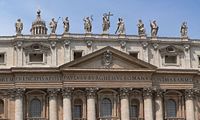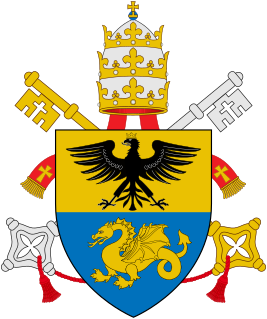
Pope Paul V, born Camillo Borghese, was head of the Catholic Church and ruler of the Papal States from 16 May 1605 to his death. In 1611, he honored Galileo Galilei as a member of the Papal Accademia dei Lincei and supported his discoveries. In 1616, Pope Paul V instructed Cardinal Bellarmine to inform Galileo that the Copernican theory could not be taught as fact, but Bellarmine's certificate allowed Galileo to continue his studies in search for evidence and use the geocentric model as a theoretical device. That same year Paul V assured Galileo that he was safe from persecution so long as he, the Pope, should live. Bellarmine's certificate was used by Galileo for his defense at the trial of 1633.

The Galleria Borghese is an art gallery in Rome, Italy, housed in the former Villa Borghese Pinciana. At the outset, the gallery building was integrated with its gardens, but nowadays the Villa Borghese gardens are considered a separate tourist attraction. The Galleria Borghese houses a substantial part of the Borghese Collection of paintings, sculpture and antiquities, begun by Cardinal Scipione Borghese, the nephew of Pope Paul V. The building was constructed by the architect Flaminio Ponzio, developing sketches by Scipione Borghese himself, who used it as a villa suburbana, a country villa at the edge of Rome.

Junio Valerio Scipione Ghezzo Marcantonio Maria Borghese, nicknamed The Black Prince, was an Italian Navy commander during the regime of Benito Mussolini's National Fascist Party and a prominent hard-line Fascist politician in post-war Italy. In 1970 he took part in the planning of a neo-fascist coup that was called off after the press discovered it; he subsequently fled to Spain and spent the last years of his life there.

Scipione Borghese was an Italian Cardinal, art collector and patron of the arts. A member of the Borghese family, he was the patron of the painter Caravaggio and the artist Bernini. His legacy is the establishment of the art collection at the Villa Borghese in Rome.

Paula Maria Bonaparte Leclerc Borghese, better known as Pauline Bonaparte, was an imperial French princess, the first sovereign Duchess of Guastalla, and the princess consort of Sulmona and Rossano. She was the sixth child of Letizia Ramolino and Carlo Buonaparte, Corsica's representative to the court of King Louis XVI of France. Her elder brother, Napoleon, was the first emperor of the French. She married Charles Leclerc, a French general, a union ended by his death in 1802. Later, she married Camillo Borghese, 6th Prince of Sulmona. Her only child, Dermide Leclerc, born from her first marriage, died in childhood. She was the only Bonaparte sibling to visit Napoleon in exile on his principality, Elba.

The Doria Pamphilj Gallery is a large art collection housed in the Palazzo Doria Pamphilj in Rome, Italy, between Via del Corso and Via della Gatta. The principal entrance is on the Via del Corso. The palace façade on Via del Corso is adjacent to a church, Santa Maria in Via Lata. Like the palace, it is still privately owned by the princely Roman family Doria Pamphili. Tours of the state rooms often culminate in concerts of Baroque and Renaissance music, paying tribute to the setting and the masterpieces it contains.

The House of Aldobrandini is an Italian noble family originally from Florence, where in the Middle Ages they held the most important municipal offices. Now the Aldobrandini are resident in Rome, with close ties to the Vatican.
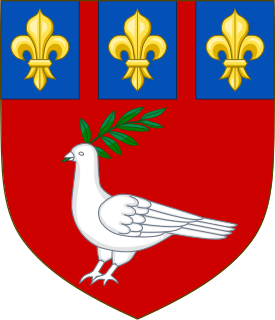
The House of Pamphili was one of the papal families deeply entrenched in Catholic Church, Roman and Italian politics of the 16th and 17th centuries.

The House of Chigi is an Italian princely family of Sienese origin descended from the counts of Ardenghesca, which possessed castles in the Maremma, southern Tuscany. Later, the family settled in Rome. The earliest authentic mention of them is in the 13th century, with one Alemanno, counsellor of the Republic of Siena.

The Borghese Collection is a collection of Roman sculptures, old masters and modern art collected by the Roman Borghese family, especially Cardinal Scipione Borghese, from the 17th century on. It includes major collections of Caravaggio, Raphael, and Titian, and of ancient Roman art. Cardinal Scipione Borghese also bought widely from leading painters and sculptors of his time, and Scipione Borghese's commissions include two portrait busts by Gian Lorenzo Bernini. Most of the collection remains intact and on display at the Galleria Borghese, although a significant sale of classical sculpture was made under duress to the Louvre in 1807.
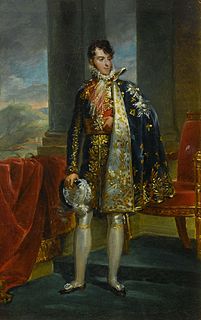
Don Camillo Filippo Ludovico Borghese, Prince of Sulmona and of Rossano, Duke and Prince of Guastalla was a member of the Borghese family, best known for being a brother-in-law of Napoleon.

Olimpia Maidalchini Pamphilj, , was the sister-in-law of Pope Innocent X (Pamphili). She was perceived by her contemporaries as having influence regarding papal appointments.
Marcantonio III Borghese, 5th Prince of Sulmona was the head of the Borghese family of Rome. Pro-Bonaparte in sympathies, he was the father of Camillo Filippo Ludovico Borghese, 6th Prince of Sulmona and Francesco, 7th Prince of Sulmona (1832–1839).
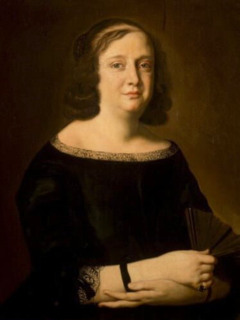
Olimpia Aldobrandini was a member of the Aldobrandini family of Rome, and the sole heiress to the family fortune.

Prince Luigi Marcantonio Francesco Rodolfo Scipione Borghese, commonly known as Scipione Borghese, was an Italian aristocrat, industrialist, politician, explorer, mountain climber and racing driver belonging to the House of Borghese.
Prince Paolo Borghese, Duke of Bomarzo, Prince of Sant Angelo of San Paolo was an Italian nobleman of the Borghese family. He was born in Cafaggiolo. His father and mother were Marco Borghese, Duca di Bomarzo, and Isabel Fanny Louise Porges.
Paolo Borghese (1622/24–1646) was an Italian nobleman of the Borghese family. He was the son of Marcantonio II Borghese (1598–1658) and his wife Camilla Orsini.

Camillo Francesco Maria Pamphili was an Italian Catholic cardinal and nobleman of the Pamphili family. His name is often spelled with the final long i orthography; Pamphilj.
Princess Adelaide of Savoy-Genoa, was a daughter of Prince Thomas, Duke of Genoa and Princess Isabella of Bavaria.

